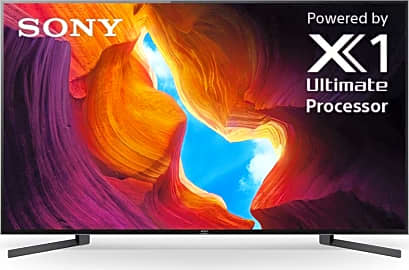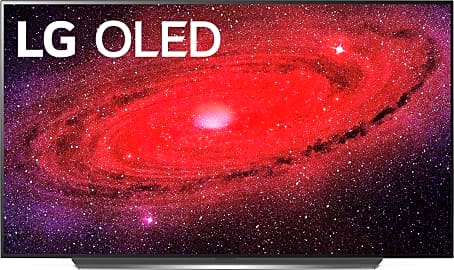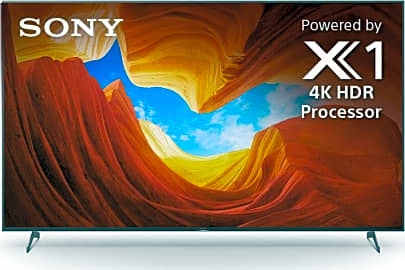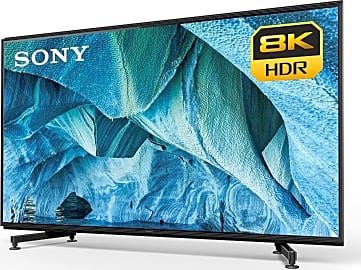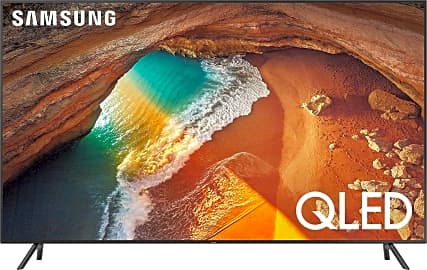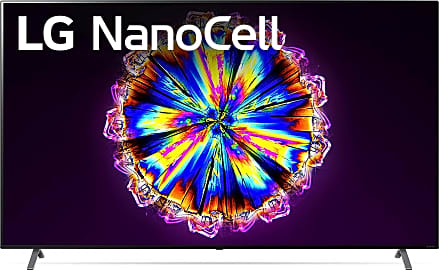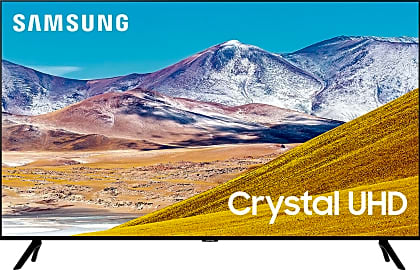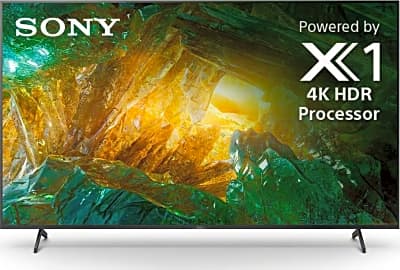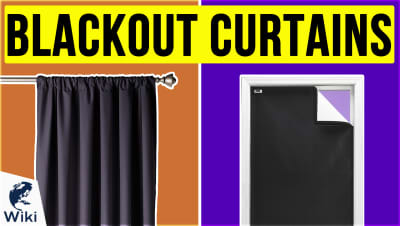The 10 Best 85 Inch TVs

This wiki has been updated 27 times since it was first published in July of 2018. There's a wider selection of large-format televisions than ever, and while they're still priced in the thousands of dollars range, their image quality and reliability is finally starting to live up to the cost. Produced by a few prominent manufacturers with much of the latest display panel technology available, here are some of the best-looking TVs in the neighborhood of 85 inches. When users buy our independently chosen editorial recommendations, we may earn commissions to help fund the Wiki.
Editor's Notes
July 17, 2020:
As you'd probably imagine, TVs this large don't come cheap, but you don't necessarily have to spend an arm and a leg to get something of good quality that will last for years. The Samsung TU8000 and Sony X800H, for instance, are both reasonably priced, although you will make sacrifices in terms of color gamut coverage and contrast levels in both models. If you're a stickler for image quality but really against spending a fortune, the LG UN8570 is worth a look. In fact, it has very few drawbacks despite its moderate cost.
The Samsung Q90R is another relatively low-priced option that's somewhat of an interesting case. Typically, electronics and especially TVs tend to get better with each successive release. Samsung actually switched up their marketing classifications this year, leading to a slightly lower low end and a higher high end to accommodate their top-of-the-line 8K TVs. With that in mind, last year's Q60R is a better performer than this year's Q60T both on paper and in reality. In fact, this year, at the Q60 level, they did away with the 120 hertz panel in favor of meager 60 hertz display.
On the other hand, if you have the budget to spare, there are some really fantastic options available that are relatively future-proof. The Sony Z9G and OLED LG CX are the two most obvious, but the Sony X900H is a mid-range option that's also advertised to support HDMI 2.1 in the future. Unfortunately, and somewhat oddly, the Sony X950H will not be receiving such high frame rate abilities in the future, although it does offer eARC support right out of the box.
May 24, 2019:
If you have enough room in your home and enough cash in your wallet, it's a great time to buy a gigantic TV. You can get by without spending an absolute fortune -- the Vizio E and Samsung 8 Series are both much less expensive than high-end models and look great -- but if you're willing to part with a little more, you can get a nearly cinematic experience.
Sony makes great products, and their huge TVs are no exception. The 900F was introduced last year and is still extremely popular; in fact, this year's 950G is supposedly an entire tier higher, but in reality, is barely an improvement. The 850G may be even more worthwhile, as it suffers from a bit less of the "Sony tax" that tends to drive prices up. LG has a new model that's relatively untested but promises to deliver, though if you can afford it, their 77-inch OLED displays are simply stunning. They're closest thing you can really get to a cinema-like display without moving to an insanely expensive laser projector.
But you'll notice that Samsung has a few options here, and that's for good reason. In addition to the aforementioned 8 Series, their QLED line looks fantastic, especially when it comes to color boldness and HDR support. The real king here, of course, is their mind-blowing 8K TV. It is, however, absurdly costly, and there's very little 8K content to properly take advantage of its technology, so it's mostly reserved for early adopters and bragging rights.
Special Honors
LG W9 Wallpaper TV It's definitely a niche product, but if you want the sleekest design imaginable, the Wallpaper TV is hard to top. Sure, it costs many thousands of dollars, but the main viewable portion is less than a quarter-inch thick. As the name implies, of course, it will require mounting on a wall, but that's a small price to pay for one of the most interesting televisions on the market. lg.com
LG ZX Many people agree that OLED looks better than LCD technology overall. It's also considerably more expensive. Brand new hardware capabilities also tend to add considerable price. Those all come into play with the cutting-edge LG ZX, which is the first emissive display to top the 77-inch mark, and it does so with an 8K resolution that, while not as popular of a format as 4K, is visually stunning and qute future-proof. Be prepared to shell out an absurd amount of cash for it, however. lg.com
Samsung Q950TS If you want to take both form and function to the next level, this might be the option for you. While it uses relatively traditional LCD technology with the QLED filter the manufacturer is known for, it does so at an 8K resolution with an almost nonexistent bezel and some of the brights colors as well as best dynamic contrast in the business. samsung.com
Why You Need A Big TV
I’ve had some friends who have invited me over to a viewing party at their house, only to realize that they should have called it a squinting party.
There’s little argument against the notion that we’re living in the age of peak TV. With so much outstanding, cinematic television available to us, and with seemingly endless libraries of free and paid movie subscription services out there, there’s less and less a reason to actually get up and go to the movies.
Now, to be clear, I am a huge proponent of a trip to the cinema. Movies — especially big ones that you haven’t seen yet, are best enjoyed in a room full of strangers with the help of an absurdly expensive sound system. That said, going to the movies these days is an expensive prospect, especially if you have a family. Given the amount of time many of us spend binging these great shows, watching our old favorite movies at home, and even seeking out new cinematic experiences from the couch, having a big, 85-inch TV can both save you money and increase your level of enjoyment.
Then, there’s the benefit of hosting. I’ve had some friends who have invited me over to a viewing party at their house, only to realize that they should have called it a squinting party. There’s an ideal distance for viewing a television (which differs depending on its resolution), but it’s hard to perfect this viewing distance when you’re setting up extra rows of chairs for an overflow of guests. A big enough TV ensures that there’s not a bad seat in the house.
What To Look For In An 85-Inch Television
There aren’t a lot of things in an 85-inch television that you can’t find in smaller TVs (though the picture in picture is certainly more satisfying). Most television sets nowadays offer many of the same features, so choosing from among a group is more about the performance of those features. The one thing unique to a larger class of television that you should take into account is its stand or mount. These are significantly larger and heavier than more common 50-inch varieties, so getting them safely installed creates new challenges. Make sure you find a set that’s known for having a sturdy stand, or that’s compatible with the best mounting hardware on the market.
Keep in mind that most of these devices build their speakers to be rear-facing, which allows the screen to take up all its front-facing real estate.
Beyond that, you’ll probably be interested in a TV with good smart features. Most sets now come with some kind of software built in that can access a litany of popular streaming platforms. Usually this is some kind of Android or Roku software, though some other types exist. Look for a set that’s known for having a fast, reliable, and intuitive interface. Some smart TVs really get bogged down in unnecessarily complicated menus or intrusive advertisements.
There’s little chance that you’re looking into a TV this large without also looking into a good sound system, but in case you’re only able to acquire one of these components at a time, you’ll want a set with a good speaker array. Keep in mind that most of these devices build their speakers to be rear-facing, which allows the screen to take up all its front-facing real estate. That means you might lose sound quality when mounting directly against a wall. Some sets seek to combat this by directing their speakers upward along the back of the unit, but this often makes for a thicker set overall.
Then, of course, there’s the actual nature of the device’s LEDs. Now, the big question is between LED, OLED, and Samsung’s cleverly similar QLED. Generally speaking, simple LED televisions are the best bargain, and they’ve grown in capabilities to a point: they can only dim their diodes in local groups (remember there are over 8 million of these things in each set). That can create some light bleed and areas of a picture that aren’t quite as dark as the filmmakers intended them to be.
OLED TVs utilize an array of specialized organic diodes that can respond to input data at the level of the individual diode, so luminance at each pixel is exactly as intended by the content creators. This makes for much deeper blacks, and an overall sense of better resolution and dynamism. QLEDs aren’t quite as nice, but they occupy a formidable middle ground between OLED and LED.
Tricking Out Your TV Room
Once you’ve got your giant new television installed, you’re going to want to complement it with a variety of things that will transform your viewing space into its very own home theater. These are the kinds of things that separate a normal living room with an unusually large television in it from a true entertainment center.
It’s a little cheesy, sure, but if you regularly host movie nights or sports parties for your friends, it can really come in handy.
For starters, you have to consider sound. A good sound system can make an old cathode ray TV feel like Speilberg’s private screening room, so it’s sure to take your new TV and elevate it to unexpected heights. Surround sound is a must if your space allows for it, and there are systems on the market today that support wireless, rechargeable speakers, so you don’t even need to be an electrician to install it.
Next, there’s the space itself. Too much ambient light here is your enemy, so you should employ everything from soft lamps for when you absolutely need to see at night, to blackout curtains that can blot out the sun for those all-day marathon movie sessions. And if you’re going for the home theater vibe, consider a large-scale popcorn popper. It’s a little cheesy, sure, but if you regularly host movie nights or sports parties for your friends, it can really come in handy.
Last, and certainly not least, there’s your comfort. Your rickety old futon just isn’t going to cut it in a cutting edge home theater. Look instead for some theatrical recliners, which can give you things like cup holders and surfaces for snacks. You’ll be able to kick back with a large Coke and a big bucket of popcorn, and settle in to watch your favorite flix.


